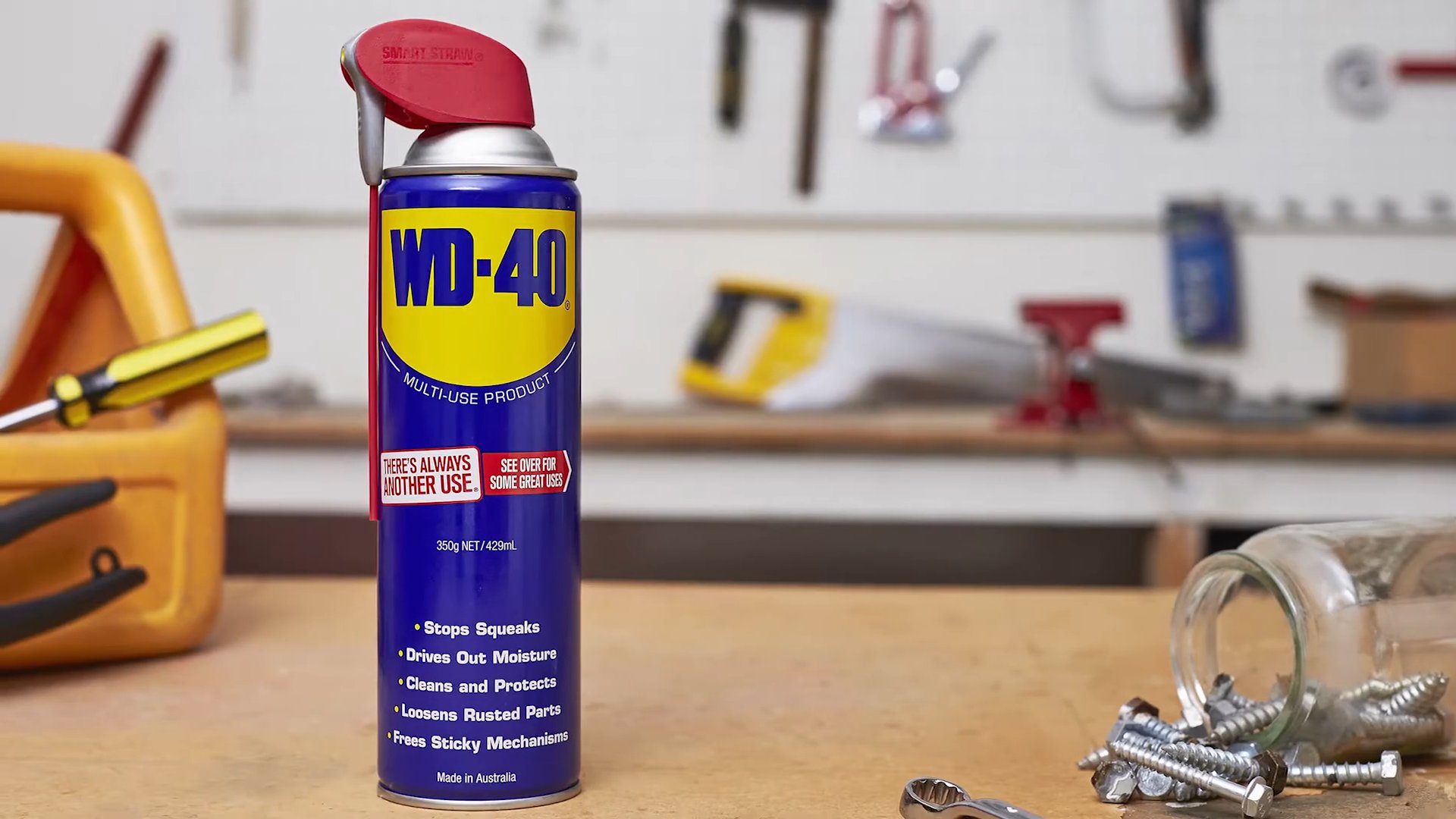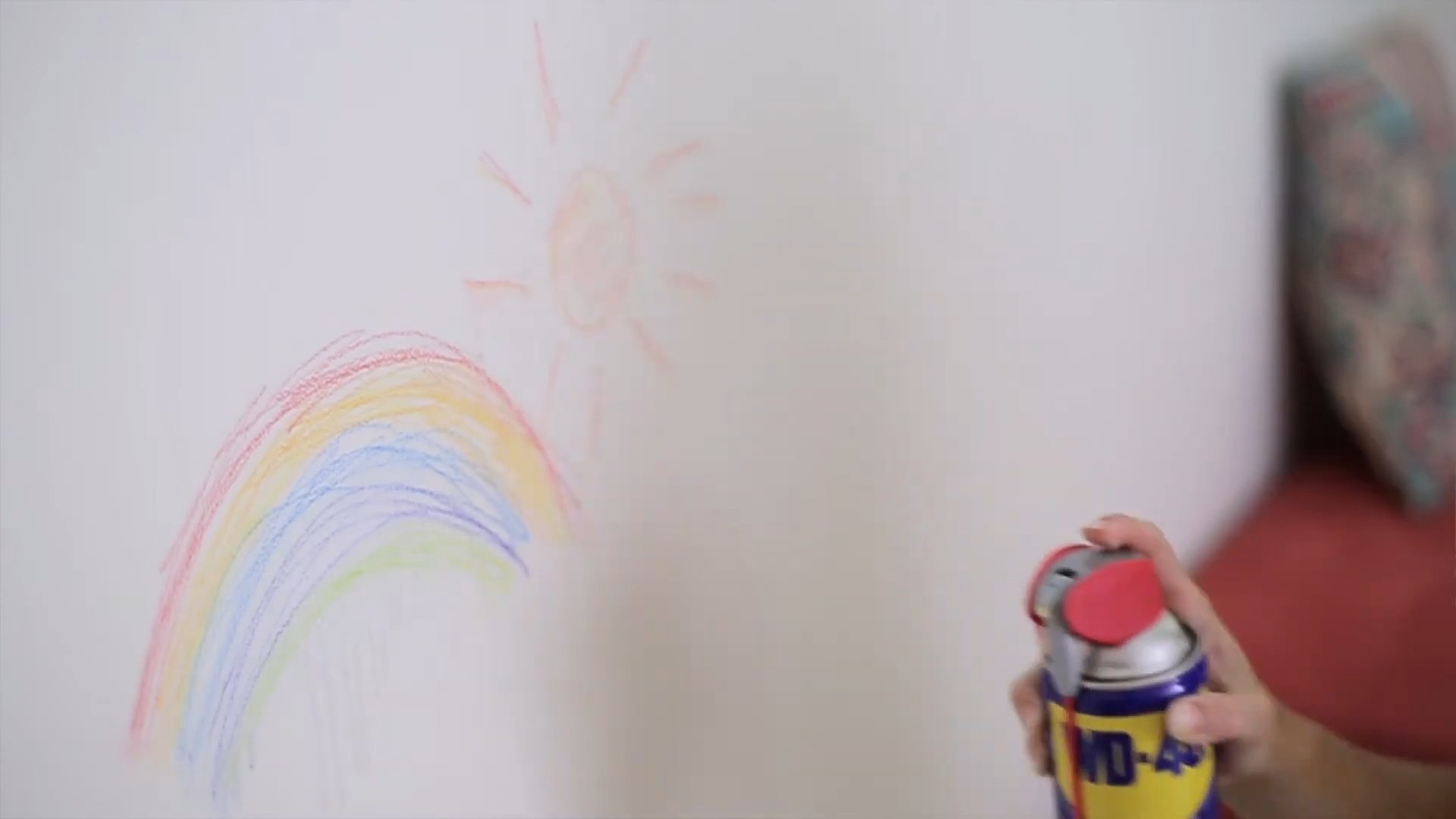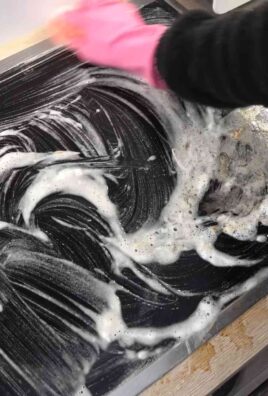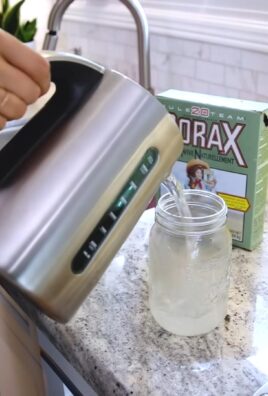WD-40 uses and hacks: Prepare to be amazed! I’m about to unlock a treasure trove of unexpected uses for that iconic blue and yellow can sitting in your garage. Forget just squeaky hinges – we’re diving deep into the world of WD-40 and uncovering DIY tricks that will simplify your life, save you money, and maybe even impress your neighbors.
WD-40 has been a household staple since 1953, initially designed to protect missiles from rust and corrosion. Who knew this aerospace innovation would become a go-to for everything from loosening stubborn bolts to removing crayon masterpieces from walls? Its versatility has cemented its place in our homes, but I bet you’re only scratching the surface of its potential.
In today’s world, we’re all looking for ways to be more resourceful and efficient. Why spend money on specialized products when one can, WD-40 uses and hacks, can tackle a multitude of tasks? From gardening to cleaning to even removing sticky residue, WD-40 is the ultimate multi-tasker. So, grab your can, and let’s get ready to explore the amazing world of WD-40 hacks that will transform the way you approach everyday problems!

Unlocking the Magic: WD-40 Hacks You Need to Know!
Hey there, fellow DIY enthusiasts! I’m about to let you in on a little secret weapon that’s probably already lurking in your garage: WD-40. You might think of it as just a lubricant for squeaky hinges, but trust me, this stuff is a multi-purpose marvel. I’ve been using WD-40 for years, and I’m constantly amazed by its versatility. Get ready to have your mind blown with these incredible WD-40 hacks!
The Ultimate WD-40 Toolkit: What You’ll Need
Before we dive into the hacks, let’s make sure you’re properly equipped. Here’s what I recommend having on hand:
* A can of WD-40 (obviously!)
* A few clean cloths or rags
* Paper towels
* Gloves (optional, but recommended for messy jobs)
* A small brush (like an old toothbrush)
* A scraper or putty knife (for removing stubborn residue)
* Safety glasses (especially when spraying overhead)
Hack #1: Squeaky No More! Silencing Annoying Hinges
This is the classic WD-40 application, and for good reason – it works like a charm!
Why it works: WD-40 is a penetrating lubricant that loosens rust and grime, allowing the hinge to move freely.
Step-by-step instructions:
1. Identify the culprit: Open and close the door or gate slowly to pinpoint the exact hinge that’s causing the squeak.
2. Prepare the area: Place a rag or paper towel underneath the hinge to catch any drips.
3. Apply WD-40: Aim the nozzle directly at the hinge pin and spray a short burst of WD-40.
4. Work it in: Open and close the door or gate several times to distribute the lubricant.
5. Wipe away excess: Use a clean cloth to wipe away any excess WD-40 that drips down.
6. Repeat if necessary: If the squeak persists, repeat steps 3-5. Sometimes it takes a couple of applications to fully penetrate the hinge.
Hack #2: Removing Sticky Residue: Goodbye, Goo!
Stickers, tape, and labels can leave behind a nasty, sticky residue that’s a pain to remove. WD-40 to the rescue!
Why it works: WD-40’s solvents break down the adhesive, making it easier to wipe away.
Step-by-step instructions:
1. Apply WD-40: Spray a generous amount of WD-40 directly onto the sticky residue.
2. Let it soak: Allow the WD-40 to sit for a few minutes (5-10 minutes should do the trick) to penetrate the adhesive.
3. Wipe or scrape: Use a clean cloth or a plastic scraper to gently remove the residue. For stubborn residue, you might need to apply a little pressure.
4. Clean the surface: Once the residue is gone, clean the surface with soap and water to remove any remaining WD-40.
Hack #3: Unsticking Zippers: Smooth Sailing Ahead!
A stuck zipper can be incredibly frustrating, especially when you’re in a hurry. WD-40 can get things moving again.
Why it works: WD-40 lubricates the zipper teeth, allowing them to slide past each other more easily.
Step-by-step instructions:
1. Apply WD-40 carefully: Use the straw attachment to apply a small amount of WD-40 directly to the stuck area of the zipper. Be careful not to spray it on the surrounding fabric.
2. Gently wiggle the zipper: Gently try to move the zipper up and down. Don’t force it!
3. Repeat if necessary: If the zipper is still stuck, apply a little more WD-40 and try wiggling it again.
4. Wipe away excess: Once the zipper is moving freely, wipe away any excess WD-40 with a clean cloth.
Hack #4: Water Displacement: Keeping Things Dry
As the name suggests, WD-40 is excellent at displacing water. This makes it useful for a variety of applications.
Why it works: WD-40’s formula is designed to penetrate and displace moisture, preventing rust and corrosion.
Applications:
* Wet electronics: If you accidentally get your phone or other electronic device wet, immediately remove the battery (if possible) and spray a small amount of WD-40 into the ports and crevices. This can help prevent corrosion and potentially save your device. Important: This is a risky move, and there’s no guarantee it will work. It’s always best to consult a professional for water damage repair.
* Wet ignition systems: If your car won’t start after a heavy rain, the ignition system might be wet. Spraying WD-40 on the distributor cap and spark plug wires can help displace the water and get your car running again.
* Protecting tools from rust: Spraying WD-40 on your tools can help prevent rust and corrosion, especially if you live in a humid climate.
Hack #5: Removing Crayon Marks: Art Attack Cleanup!
Kids love to express their creativity, but sometimes that creativity ends up on the walls. WD-40 can help you remove crayon marks without damaging the paint.
Why it works: WD-40’s solvents dissolve the wax in the crayon, making it easier to wipe away.
Step-by-step instructions:
1. Apply WD-40: Spray a small amount of WD-40 onto a clean cloth.
2. Gently wipe the crayon marks: Gently wipe the crayon marks with the cloth. Avoid scrubbing, as this could damage the paint.
3. Clean the surface: Once the crayon marks are gone, clean the surface with soap and water to remove any remaining WD-40.
Hack #6: Cleaning and Polishing Stainless Steel: Shine On!
WD-40 can be used to clean and polish stainless steel appliances, leaving them looking shiny and new.
Why it works: WD-40 removes fingerprints, smudges, and water spots, leaving behind a protective coating that helps prevent future stains.
Step-by-step instructions:
1. Apply WD-40: Spray a small amount of WD-40 onto a clean cloth.
2. Wipe the stainless steel: Wipe the stainless steel appliance with the cloth, following the grain of the metal.
3. Buff with a clean cloth: Buff the surface with a clean, dry cloth to remove any excess WD-40 and create a shine.
Hack #7: Removing Tar and Road Grime: Car Care Magic!
Tar and road grime can be tough to remove from your car’s paint. WD-40 can make the job much easier.
Why it works: WD-40’s solvents dissolve the tar and grime, allowing you to wipe it away without damaging the paint.
Step-by-step instructions:
1. Apply WD-40: Spray WD-40 directly onto the tar or road grime.
2. Let it soak: Allow the WD-40 to sit for a few minutes to penetrate the grime.
3. Wipe away the grime: Use a clean cloth to wipe away the tar or road grime. You may need to apply a little pressure for stubborn spots.
4. Wash the area: Wash the area with soap and water to remove any remaining WD-40.
Hack #8: Loosening Rusted Bolts and Screws: A Mechanic’s Best Friend!
Rusted bolts and screws can be a nightmare to remove. WD-40 can help loosen them up.
Why it works: WD-40 penetrates the rust and corrosion, allowing you to turn the bolt or screw more easily.
Step-by-step instructions:
1. Apply WD-40: Spray WD-40 directly onto the rusted bolt or screw.
2. Let it soak: Allow the WD-40 to soak for at least 15-30 minutes, or even longer for heavily rusted bolts.
3. Try to loosen the bolt or screw: Use a wrench or screwdriver to try to loosen the bolt or screw. If it’s still stuck, apply more WD-40 and let it soak longer.
4. Use a penetrating oil (optional): For extremely stubborn bolts, you might want to try using a dedicated penetrating oil instead of WD-40. These oils are specifically designed to break down rust and corrosion.
Hack #9: Preventing Snow Buildup: Winter Warrior!
Spraying WD-40

Conclusion
So, there you have it! We’ve explored a multitude of surprising and incredibly useful WD-40 uses and hacks that extend far beyond its traditional role as a lubricant. From banishing stubborn stains and silencing squeaky hinges to protecting your garden tools and even removing crayon masterpieces from your walls, WD-40 proves itself to be a true household hero.
But why is this DIY approach a must-try? Simply put, it’s about efficiency, cost-effectiveness, and unlocking the full potential of a product you likely already have in your garage. Instead of reaching for specialized cleaners or expensive solutions for every little problem, WD-40 offers a versatile and readily available alternative. It’s about simplifying your life and tackling everyday challenges with a single, powerful can.
Consider these variations to further personalize your WD-40 experience:
* **For delicate surfaces:** Always test WD-40 in an inconspicuous area first to ensure it doesn’t cause any discoloration or damage.
* **For targeted application:** Use the straw attachment for precise spraying in hard-to-reach areas.
* **For rust prevention:** Apply a thin coat of WD-40 to metal surfaces before storing them to prevent rust and corrosion.
* **For cleaning tools:** After using your garden tools, spray them with WD-40 and wipe them clean to remove dirt and grime. This will also help to prevent rust and keep them in good working order.
* **For removing sticky residue:** Let WD-40 sit for a few minutes on the sticky residue before wiping it away for easier removal.
We’ve only scratched the surface of what’s possible with this amazing product. The possibilities are truly endless, limited only by your imagination. We encourage you to experiment and discover even more innovative WD-40 uses and hacks around your home and beyond.
Don’t just take our word for it – try these WD-40 uses and hacks for yourself! We’re confident that you’ll be amazed by the results. And most importantly, we want to hear about your experiences! Share your own WD-40 discoveries and tips in the comments below. Let’s build a community of WD-40 enthusiasts and unlock even more of its hidden potential together. What unexpected problems has WD-40 solved for you? What creative solutions have you come up with? We can’t wait to hear your stories!
Now, go forth and conquer those household challenges with the power of WD-40!
Frequently Asked Questions (FAQ)
Is WD-40 safe to use on all surfaces?
While WD-40 is generally safe for use on many surfaces, it’s always best to test it in an inconspicuous area first, especially on delicate materials like painted surfaces, plastics, or fabrics. Some plastics and paints may react negatively to the solvents in WD-40, causing discoloration or damage. If you’re unsure, consult the manufacturer’s instructions for the surface in question or contact WD-40’s customer support for guidance. Remember, a little caution can prevent potential problems.
Can WD-40 be used as a lubricant for everything?
WD-40 is a decent lubricant for light-duty applications, such as loosening sticky hinges or lubricating bicycle chains. However, it’s not a long-term lubricant for heavy machinery or high-friction applications. WD-40 is primarily a solvent and water displacer, and its lubricating properties are relatively short-lived. For applications requiring long-lasting lubrication, consider using a dedicated lubricant like grease or oil. Using the right lubricant for the job will ensure optimal performance and prevent premature wear and tear.
Is WD-40 flammable?
Yes, WD-40 is flammable. It contains petroleum distillates, which are combustible. Therefore, it’s essential to use WD-40 in a well-ventilated area and keep it away from open flames, sparks, and other sources of ignition. Avoid spraying WD-40 near electrical outlets or equipment that could generate sparks. Store WD-40 in a cool, dry place away from heat and direct sunlight. Always read and follow the safety precautions on the product label.
How do I remove WD-40 residue?
If you need to remove WD-40 residue, you can use a variety of methods depending on the surface. For most surfaces, a clean cloth dampened with soapy water will do the trick. Wipe the surface thoroughly to remove the residue, and then dry it with a clean cloth. For more stubborn residue, you can try using a degreaser or a solvent like mineral spirits. Always test the cleaning solution in an inconspicuous area first to ensure it doesn’t damage the surface.
Can WD-40 damage rubber or plastic?
Prolonged exposure to WD-40 can potentially damage certain types of rubber and plastic. The solvents in WD-40 can cause these materials to swell, soften, or degrade over time. It’s best to avoid using WD-40 on rubber or plastic components that are critical to the function or safety of a device or machine. If you must use WD-40 on these materials, apply it sparingly and wipe off any excess immediately. Consider using a silicone-based lubricant instead, as it is generally safer for rubber and plastic.
Is WD-40 safe for use around children and pets?
WD-40 should be kept out of reach of children and pets. It contains chemicals that can be harmful if ingested or inhaled. If WD-40 is accidentally swallowed, seek medical attention immediately. When using WD-40, ensure adequate ventilation to avoid inhaling the fumes. Store WD-40 in a secure location where children and pets cannot access it. Consider using alternative, non-toxic products for tasks where children or pets may be present.
What are some alternative uses for WD-40 in the garden?
Beyond protecting garden tools, WD-40 can be used to deter insects from climbing plants, lubricate pruning shears, and even clean bird feeders. Spraying a light coating of WD-40 on the stems of plants can create a slippery barrier that prevents insects from crawling up. Lubricating pruning shears with WD-40 will keep them working smoothly and prevent rust. Cleaning bird feeders with WD-40 will help to remove bird droppings and keep them sanitary. Remember to use WD-40 sparingly and avoid spraying it directly on edible plants.
Can WD-40 really remove crayon from walls?
Yes, WD-40 can be surprisingly effective at removing crayon marks from walls. Simply spray a small amount of WD-40 onto the crayon marks and let it sit for a few minutes. Then, wipe the area with a clean cloth. The crayon should come off easily. Be sure to test WD-40 in an inconspicuous area first to ensure it doesn’t damage the paint. After removing the crayon, you may want to clean the wall with soapy water to remove any remaining WD-40 residue.
Where can I buy WD-40?
WD-40 is widely available at most hardware stores, automotive supply stores, home improvement stores, and even some grocery stores. You can also purchase WD-40 online from retailers like Amazon, Walmart, and Home Depot. WD-40 is typically sold in aerosol cans of various sizes. You can also find WD-40 in liquid form for use in spray bottles or other applicators.
Is there a difference between WD-40 and other penetrating oils?
While WD-40 is a penetrating oil, there are other specialized penetrating oils available that may be more effective for specific applications. For example, some penetrating oils are designed to loosen extremely rusted or corroded parts. These specialized oils often contain additives that help them penetrate deeper and dissolve rust more effectively than WD-40. However, WD-40 is a versatile all-purpose product that can be used for a wide range of tasks, making it a convenient choice for many households.




Leave a Comment